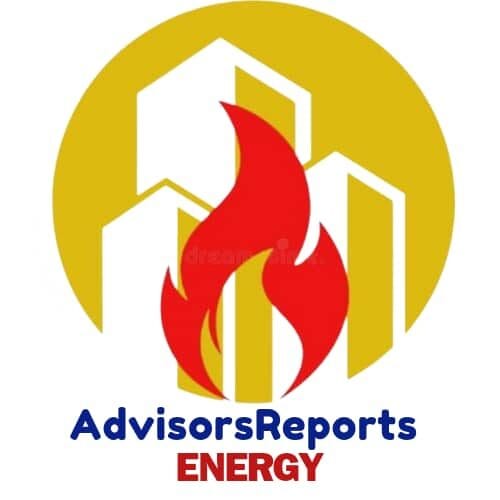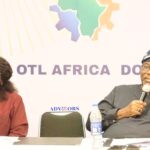…tanker queues choke Apapa/Ibafon corridor amid FX crunch, loading delays
… as drivers remain stranded for days without loading assurance
Engr. Olawoye, MD Foks JV Nig.Ltd, blames NMDPRA for failing to regulate prices, says domestic market pegged to foreign rates
LASTMA moves in as gas tanker surge triggers heavy traffic
Oredola Adeola
Long queues of gas tankers were sighted along Creek Road, leading into the NAVGAS depot in Apapa, from Monday through Wednesday and extending into the early hours of Thursday, October 22, 2025, as marketers and dealers rushed to lift Liquefied Petroleum Gas (LPG), popularly known as cooking gas, amid worsening supply constraints and rising prices.
The situation led to heavy traffic congestion across the Apapa axis, prompting the intervention of the Lagos State Traffic Management Authority (LASTMA) following a surge in the movement of gas tankers along Creek Road, inward NAVGAS, where drivers formed long queues to load cooking gas.
According to LASTMA officials, personnel have since been deployed to the area to organize and streamline the tankers into a single lane along both Creek Road and Warehouse Road to ease gridlock and maintain order.
Meanwhile, several LPG marketers continued to lament prolonged waiting times as supply tightens across major depots in Lagos.
Advisors Reports correspondents who monitored the situation across several depots in the Apapa axis observed that NAVGAS was the only terminal actively discharging product during the period, while other major depots, including PPMC Apapa, NIPCO, Matrix Energy Resources, Stockgap Energy, Ardova Plc, Rainoil Plc, Dozzy Oil, Techno Oil, 11 PLC, KHNL, A.A. Rano, and Shafa Energy, all within the Apapa/Ibafon corridor, were not discharging LPG to marketers at the time of reporting.
Some tankers drivers confirmed that they have been stationed in long queues across various depots in Apapa, Lagos, for several days, some reportedly for weeks, without any clear assurance of loading.
Several marketers who could no longer endure the prolonged delay reportedly canceled their loading requests, retrieved their upfront payments, and moved to alternative terminals offering product at higher prices.
However, one of the marketers who switched depots later expressed regret, saying that even at the higher rate, the situation remained uncertain.
A gas plant manager, who spoke under condition of anonymity, lamented that despite paying more at another terminal, his trucks have yet to be loaded.
He expressed concern that the product might run out before it gets to his turn, as he had been informed that loading for his tankers might not commence until the weekend.
Engineer Anslem Olawoye, Managing Director of Foks JV Nigeria Ltd, a major player in the domestic LPG market, has attributed the ongoing Liquefied Petroleum Gas (LPG) scarcity in parts of the country to a combination of supply disruptions and market distortions.
Speaking with Advisors Reports, Olawoye identified several factors fueling the crisis, including the three-day industrial dispute between Dangote and PENGASSAN from September 29 to October 1, 2025, persistent foreign exchange (Forex) challenges faced by importers, loading delays at the Dangote Refinery, and the widening gap in domestic gas supply.
According to him, while Dangote’s LPG remains the cheapest in the market, selling at around ₦16.5 million per 20 metric tonnes (MT) — distribution has been hindered by congestion at the refinery’s gantry, which limits the number of trucks that can load per day.
“Many importers who cannot source foreign exchange at a competitive rate have stopped bringing in cooking gas due to current pricing dynamics,” Olawoye explained.
“Although NLNG and Dangote sell at relatively lower prices, the products remain scarce because of limited volumes and increasing demand.”
He further revealed that Nigeria LNG Limited (NLNG) has not released product into the domestic market “for some time,” citing competing demand from other offtakers.
“The government and Ekperikpe Ekpo, Minister of State for Petroleum Resources (Gas) need to urgently look into the entire supply chain,” he urged.
Olawoye also faulted the Nigerian Midstream and Downstream Petroleum Regulatory Authority (NMDPRA) for failing to set a clear price template or monitor the market effectively.
He accused the agency of allowing domestic LPG prices to be benchmarked against international rates.
“How can gas producers be collecting foreign currency for a product produced locally?” he queried.
“NMDPRA should step in and do their job. What is the role of the Price Control Board if they can’t intervene in such a critical situation?”
According to the Foks JV Managing Director, Nigeria’s LPG consumption currently stands at about 1.4 million tonnes per annum, while NLNG produces between 400,000 and 500,000 tonnes yearly, and Dangote Refinery is projected to supply around 730,000 tonnes per year, leaving a significant shortfall that requires coordinated intervention.
“All relevant agencies need to come together, collaborate, and synergize to address this crisis.
“There’s no monitoring, no control, how can you leave an essential commodity like cooking gas to a free fall?” Olawoye emphasized.
A reliable source at the NIPCO LPG depot in Apapa, Lagos, has confirmed that the facility is currently not loading any new products, following an intensive weekend of operations.
According to the source, NIPCO conducted night shifts throughout Friday, Saturday, and Sunday to load over 200 trucks for its stations and customers before the product ran out.
“At the moment, we don’t have product. However, we are expecting more vessels in the coming days,” the source stated.
He explained that the depot’s price as of the last loading period stood at ₦915 per kilogram noting that retail prices across its filling stations in the country could ease in the coming weeks if supply improves and remains steady.
The source also raised concerns about the pricing structure at the Dangote LPG facility, which, according to him, sells at ₦16 million per 20 metric tonnes, questioning why the lower depot price has not translated into cheaper rates at retail outlets.
“Despite Dangote’s supply, the bottleneck at their LPG gantry is slowing down operations, unlike what we see with their PMS section,” he added.
Another senior source at the 11PLC depot has attributed the lingering Liquefied Petroleum Gas (LPG) shortage across the country to foreign exchange pressures, limited domestic supply, and increased operational costs tied to importation.
According to the source, the three-day shutdown of key supply channels by PENGASSAN, which occurred between September 29 and October 1, 2025, aggravated the situation and further intensified the ongoing supply challenges.
“The main issue is the forex. Since the Naira was floated, buying dollars at a high rate adds significantly to the cost of operations.
“We are relying heavily on local supply now because importing is no longer competitive,” the source explained.
The source added that Nigeria LNG (NLNG) remains the primary local supplier, but its allocation is spread among many marketers, including Ardova, AA Rano, and several other players.
“NLNG currently has too many off-takers, and demand far exceeds available supply.
“For example, when a depot receives about 5,000 tonnes of LPG, it only covers roughly 250 trucks, yet many other marketers are still waiting for their allocations,” the depot official explained.
While some companies have attempted small-scale importation to cushion the shortfall, the Advisors Reports’ source noted that imported LPG often incurs additional costs due to the mixed composition of butane and propane from suppliers such as Greenville, Kwale, Seplat, and Chevron.
“These other suppliers are producing mixed gas, butane and propane, and separating the mixture comes at an extra cost,” the source stated.
The depot official further noted that inadequate infrastructure, rising freight costs, and limited vessel capacity have compounded the crisis.
“Government could help by providing incentives, maybe subsidising freight or supporting the acquisition of larger mother vessels that can carry more volume,” the source suggested.
He disclosed that NIPCO and other marketers have been working to stabilise distribution, assuring that “by the weekend, more products should be available.”
“Even those who have paid are being assured of deliveries. Some of our retail outlets have had to cut down temporarily, but we expect supply to improve soon,” the source added.
The source emphasised the need for transparency in allocation processes and a review of the pricing template to reflect current realities, warning that sustained forex pressure could continue to affect product availability and affordability.




